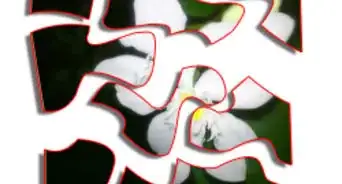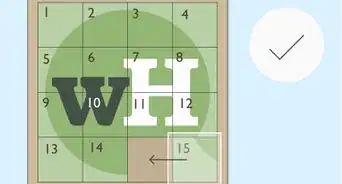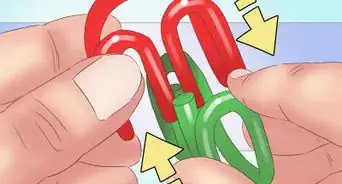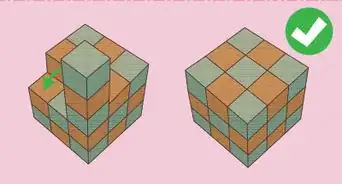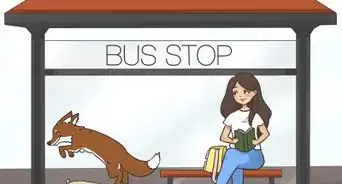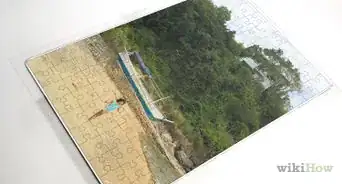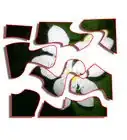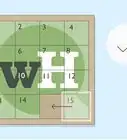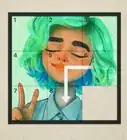This article was co-authored by Ryaan Tuttle. Ryaan Tuttle is a Home Improvement Specialist and the CEO of Best Handyman, Inc. in Boston, Massachusetts. With over 17 years of experience, he specializes in building home service businesses, focusing on creating scalable and efficient brands. With the help of his global team, the companies have achieved over 10+ million in sales and received recognition through magazine features, and enjoy partnerships with wikiHow and Jobber field service software. Boston Magazine and LocalBest.com have named Best Handyman Boston the Best Handyman in Boston. Ryaan holds Construction Supervisor and Home Improvement Contractor Licenses.
wikiHow marks an article as reader-approved once it receives enough positive feedback. This article has 13 testimonials from our readers, earning it our reader-approved status.
This article has been viewed 388,527 times.
Putting a puzzle together is a fun activity and a great workout for your brain. Making your own puzzle is even more fun, and adds a whole new dimension to the activity! Homemade puzzles also make heartfelt gifts that you can customize and personalize for the unique people in your life. Depending on the tools you have at your disposal, you can make a more traditional jigsaw puzzle from wood, or you can make a simpler puzzle with cardboard. Either way, friends and family will love putting together your handcrafted puzzles!
Steps
Community Q&A
-
QuestionHow do you cut round edges?
 Community AnswerThe easiest way to cut round edges is to use a very precise X-acto knife. In a pinch, any small, sharp blade will work, including paring knives or box cutters. You can also use the eraser of a small, round object, like a pencil or pen, to provide a guide.
Community AnswerThe easiest way to cut round edges is to use a very precise X-acto knife. In a pinch, any small, sharp blade will work, including paring knives or box cutters. You can also use the eraser of a small, round object, like a pencil or pen, to provide a guide. -
QuestionHow can I make my cut edges smoother?
 Community AnswerOver time, your cutting knife will become dull, and will result in ragged edges on your puzzle pieces. Try changing your blade out for a new one every now and then. If you still get ragged edges, try sanding them lightly with some fine grit sandpaper.
Community AnswerOver time, your cutting knife will become dull, and will result in ragged edges on your puzzle pieces. Try changing your blade out for a new one every now and then. If you still get ragged edges, try sanding them lightly with some fine grit sandpaper. -
QuestionWhat is lacquer? Do I have to use it?
 Community AnswerLacquer is a type of clear sealant. You don't have to use it. You can use any thing you want (as long as it's clear and good quality), like gloss or even clear nail polish.
Community AnswerLacquer is a type of clear sealant. You don't have to use it. You can use any thing you want (as long as it's clear and good quality), like gloss or even clear nail polish.
Warnings
- For young puzzle makers, ask your parents for assistance, and don't cut anything without supervision.⧼thumbs_response⧽
- Always use caution and proper equipment when using cutting tools and saws. Take the proper safety precautions to protect yourself and others. Never put your fingers in front of a blade.⧼thumbs_response⧽
- If you don’t have the skills or experience to cut your own puzzle, ask for some help from someone who does!⧼thumbs_response⧽
References
- ↑ https://www.youtube.com/watch
- ↑ http://www.bobvila.com/articles/494-the-coping-saw/#.VjuUImvU0g4
- ↑ https://www.eternaltools.com/blog/complete-guide-to-your-dremel-rotary-tool
- ↑ https://www.youtube.com/watch
- ↑ https://www.youtube.com/watch
- ↑ https://www.youtube.com/watch
- ↑ https://www.youtube.com/watch
- ↑ https://www.youtube.com/watch
- ↑ https://www.youtube.com/watch
About This Article
To make a puzzle, choose a picture or design, like a favorite photograph, and have it enlarged and printed. Then, you should glue the picture to a puzzle backing, which could be craft-quality cardboard or plywood. After the glue has dried, spray an even coat of lacquer over the top of the photograph and let it dry. The next day, turn the photograph over and draw a grid on the back with squares that are about 1". Then use a printed off templates to trace and begin cutting puzzle pieces. For more information about what backing to use, scroll down.



